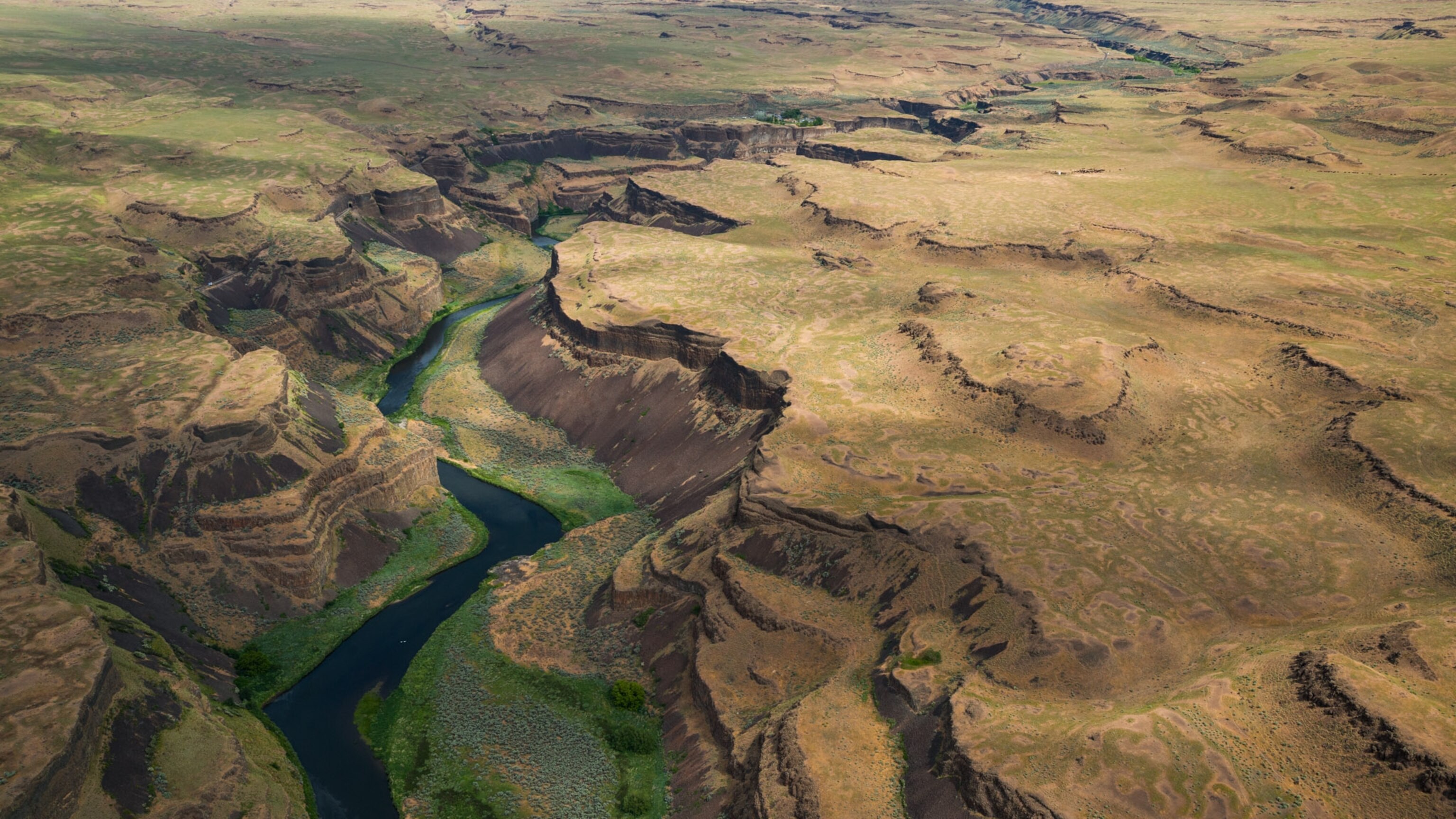The Scenic Scablands Shaped by Glacial Lake Missoula's Impact

An image of a section of scablands was captured on May 14, 2023, by the Operational Land Imager on Landsat 8.
The Channeled Scablands in Washington state were carved by outbursts from Glacial Lake Missoula.
In the southeastern region of Washington state, the landscape exhibits organized grids of farmland spread across gently sloping hills for miles. A variety of crops are cultivated on the rich agricultural land found in the Columbia Plateau, however, in some areas, a disruption occurs in the form of irregular stripes of eroded soil, breaking the linear plots and centrally-irrigated fields.
The Channeled Scablands, known as rocky scars on the land, originated 10,000 to 20,000 years in the past during a succession of severe floods. A snapshot of a section of these scablands was captured around 120 kilometers (75 miles) west of Spokane on May 14, 2023, by the Oli (Operational Land Imager) fitted with Landsat 8.
The origin of the water that created the unusual landscape was initially unexplainable to geologists for a long time. They later concluded that the Cordilleran ice sheet, as it moved south during the last ice age, formed a blockage along the Clark Fork River. Glacial Lake Missoula formed behind this ice barrier in today's western Montana and had a capacity equivalent to the combined volumes of Lake Erie and Lake Ontario. The barrier was estimated to have formed and collapsed numerous times over several millennia, releasing approximately 600 cubic miles of water which rushed across the region with each subsequent failure.
A more detailed image is shown above.
Floodwaters traveled southerly and southwesterly, finally being channeled into the Columbia River. Along their path, the waters formed depressions, craters, and elongated channels or "coulees" in the volcanic basalt bedrock. A closer view (referenced above) illustrates one of these channels and highlights the significant differentiation between the flood-eroded areas and the land suitable for farming.
The ravines featured here are small in comparison to Grand Coulee, the biggest in the Channeled Scablands, located to the north of this snapshot. The Grand Coulee Dam, finished in 1942, was the biggest concrete structure globally, until it was outdone by Itaipú Dam in South America in 1984 and Three Gorges Dam in China in 2006. Today, it's the biggest hydropower infrastructure in the U.S. and it facilitates irrigation for the Columbia Plateau.
NASA Earth Observatory images captured by Lauren Dauphin, using Landsat data supplied by the U.S. Geological Survey.




